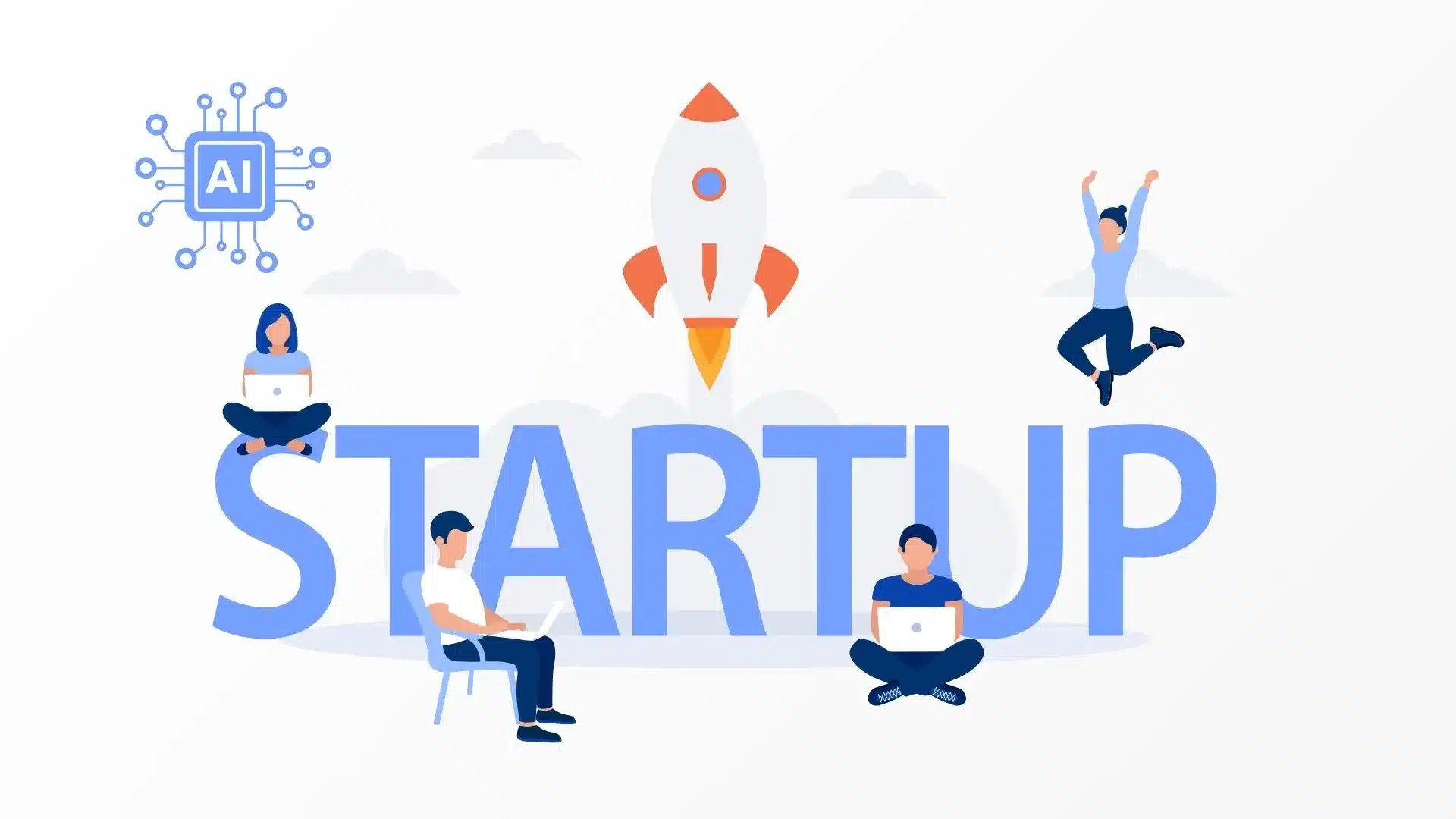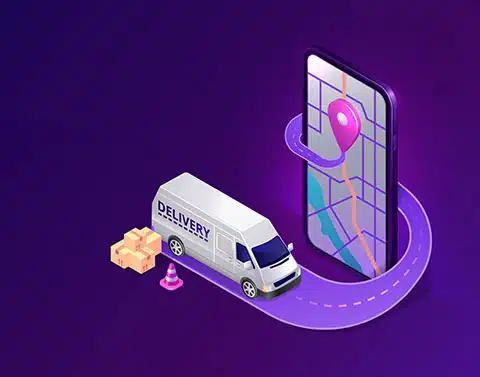In today’s mobile app market, delivering high-quality apps quickly is crucial. Moreover, agile methods has emerged as a popular approach for mobile app development, enabling teams to respond to changing needs, and deliver value to customers. In addition, this blog will guide you through the process of using Agile methods to build successful mobile apps, covering their importance, benefits, best practices, and challenges.
What is Agile Development?
Agile development is an iterative approach to software development that prioritizes flexibility, adaptability, and customer bonding. Unlike traditional methods, Agile emphasizes breaking down the development process into smaller, manageable cycles called sprints, allowing for early and frequent feedback and continuous improvement. Moreover, agile methods such as Scrum, Kanban, and Lean focus on delivering functional software increments.
Moreover, it encourages frequent feedback, iterative development cycles, and continuous improvement. Rather than following a strict plan, Agile focuses on responding to changes and customer requirements throughout the development process. Furthermore, it promotes close cooperation between team members, including developers, product owners, and stakeholders, to ensure a shared understanding of project goals and priorities. Moreover, by breaking down projects into manageable tasks and delivering incremental value, Agile development enables faster time-to-market, reduced risks, and enhanced customer satisfaction.
Why is Agile Development important for building mobile apps?
Agile development is essential for building mobile apps due to the rapidly changing nature of the mobile app industry. Furthermore, agile development allows for a flexible and iterative approach, where teams can continuously adapt and respond to these changes throughout the app development lifecycle.
Moreover, with new technologies and devices constantly emerging, along with changing user preferences, traditional development method cannot keep up. Moreover, the mobile app landscape is characterized by rapidly evolving technologies, changing user expectations, and fierce competition. Furthermore, Agile development provides several key advantages that make it well-suited for mobile app development:
- Faster time to market: Agile methods allow for shorter development cycles, enabling teams to release updates and new features more frequently. Moreover, this faster time to market gives app developers a competitive edge and allows for rapid iteration based on user feedback.
- Flexibility and adaptability: Mobile app requirements often evolve during development due to changing market trends or user feedback. Furthermore, Agile methods provide the flexibility to accommodate these changes without disrupting the entire development process, ensuring the app meets evolving needs.
- Improved communication: Agile increases communication among team members. Moreover, this leads to better alignment, reduced miscommunication, and enhanced teamwork, resulting in higher-quality mobile apps.
- Early and frequent feedback: Agile methods prioritize delivering functional software increments at regular intervals. Moreover, this enables app developers to gather early feedback from users, identify issues, and make necessary adjustments, resulting in a more user-centric and refined product.
Agile Development Process for Mobile App Development
To effectively leverage Agile methodology for mobile app development, it is essential to understand the overall process and key stages involved. Let’s delve into the Agile development process and its methods:
Overview of Agile Development Methods
Agile development encompasses various methods, each with its own set of principles, practices, and frameworks. The most used Agile methods for mobile app development include:
- Scrum: Scrum is a popular Agile framework that focuses on iterative and incremental development. Moreover, it divides the project into time-boxed iterations called sprints, typically lasting 1-4 weeks. In addition, scrum teams organize their work into a product backlog, sprint backlog, and conduct daily stand-up meetings to ensure progress and address any obstacles.
- Kanban: Kanban is a visual framework that emphasizes continuous flow and limits work in progress. It uses a Kanban board to visualize the status of tasks, from to-do to in-progress to done. Moreover, it promotes efficiency by identifying bottlenecks and facilitating the smooth movement of work items across the board.
- Lean: Lean Agile methodology borrows principles from Lean manufacturing, focusing on eliminating waste and delivering value to the customer. Moreover, these methods aim to maximize efficiency and minimize resource utilization through continuous improvement and waste reduction.
Agile Manifesto and its Principles
The Agile Manifesto serves as the foundation for Agile development, guiding teams in their approach to software development. Moreover, this manifesto consists of four key values and twelve principles, which emphasize:
- Individuals and interactions over processes and tools
- Working software over comprehensive documentation
- Customer collaboration over contract negotiation
- Responding to change over following a plan
These values and principles guide Agile teams in making decisions, prioritizing customer value, and adapting to change throughout the mobile app development process.
Tools for Agile Development
Implementing Agile development successfully requires selecting the right frameworks and tools. Moreover, here are some commonly used Agile mobile app development tools:
-
JIRA:
JIRA is a widely used project management tool that enables teams to create and manage product backlogs, track tasks, and visualize progress using Agile boards. Moreover, it facilitates collaboration and provides transparency throughout the development process. Furthermore, JIRA is a widely used tool in Agile development processes that helps teams effectively manage and track their project progress. Moreover, By providing real-time visibility into project status and progress, JIRA enables teams to identify bottlenecks, improve productivity, and deliver high-quality software within the Agile development framework.
-
Trello:
Trello is a simple and intuitive project management tool that uses boards, lists, and cards to organize tasks and track progress. Moreover, it is particularly useful for small to medium-sized teams and offers integration with various other tools. By creating boards, lists, and cards, Agile teams can visualize their workflow, prioritize tasks, and easily communicate updates and changes. Furthermore, trello’s integration with other tools, such as Slack and Jira, further streamlines workflows and enhances communication, making it an invaluable asset for Agile development teams aiming to improve collaboration, productivity, and project delivery.
-
Jenkins:
Jenkins is a popular tool for CI/CD. Moreover, it automates the build, test, and deployment processes, ensuring a streamlined and efficient delivery pipeline for mobile app development. Jenkins is an essential tool in agile development as it provides continuous integration and continuous delivery capabilities. With Jenkins, developers can easily manage different branches, run unit tests, and deploy their applications to various environments. This not only saves time and effort but also improves the overall quality of the software. Overall, Jenkins plays a crucial role in streamlining the development process and enabling agile teams to deliver high-quality software at a faster pace.
-
Appium:
Appium is an open-source test automation framework specifically designed for mobile app testing. Moreover, it allows developers to write and execute tests across multiple platforms and devices, reducing manual effort and ensuring consistent quality. Additionally, Appium’s support for parallel testing and automation of real devices enables teams to enhance speed and accuracy in the development process, ensuring constant delivery of high-quality software. Thus, Appium proves to be an essential element in Agile development, helping teams achieve their goals of seamless integration, continuous testing, and faster time-to-market.
Benefits of Agile Development for Mobile Apps
Agile development has become increasingly popular for mobile app development due to its numerous benefits. Moreover, by adopting Agile methods in mobile app development, businesses can leverage several benefits that contribute to the success of their apps.
Firstly, the iterative nature of agile enables continuous feedback and iterative testing, which allows for quick detection and resolution of bugs and issues, resulting in higher quality and more stable mobile apps. Secondly, its flexibility. Let us explore the some other advantages of agile development:
1. Faster time to market:
- Frequent releases and shorter sprints enable faster delivery of new features and updates.
- Rapid iterations based on user feedback allow for continuous improvement and user satisfaction.
2. Flexibility and adaptability:
- Agile allows for changing requirements and priorities without disrupting the entire development process.
- It enables app developers to respond to market trends, user feedback, and emerging technologies promptly.
- Adapting to change is vital in the fast-paced mobile app industry, where user preferences and technologies can shift quickly.
3. Improved collaboration and communication
- Agile methods promote cross-functional collaboration and frequent communication.
- Daily stand-up meetings facilitate better coordination, transparency, and issue resolution.
- Collaborative tools and communication platforms such as Slack or Microsoft Teams enhance real-time collaboration among team members, regardless of their location.
4. Early and frequent feedback:
- Regular feedback loops through user testing and frequent releases allow for early validation of app features and functionalities.
- Continuous feedback enables iterative improvements and ensures the app aligns with user expectations.
Additionally, the cross-functional and collaborative approach of agile development promotes effective communication and teamwork among developers, designers, and stakeholders, leading to improved productivity and faster time-to-market.
Implementing Agile Development for Mobile Apps
Now that we understand the benefits of Agile development, let’s explore the key steps involved in implementing Agile methods for mobile app development:
1. Establishing user stories and product backlog:
- User stories define app functionalities from a user’s perspective and serve as the basis for development.
Prioritize user stories based on their importance and value to the end-users. - Create a product backlog, which is a prioritized list of user stories, to guide the development process.
2. Sprint planning and execution:
- Plan sprints based on the development team’s capacity and available resources.
- Select user stories from the product backlog and break them down into smaller tasks.
- Estimate the effort required for each task and allocate them to team members.
3. Daily stand-up meetings:
- Conduct short, focused daily stand-up meetings to discuss progress, challenges, and plans for the day.
- Each team member shares their accomplishments, current tasks, and any obstacles they face.
- The goal is to keep everyone informed, identify and address any roadblocks, and maintain project momentum.
4. Sprint review and retrospective:
- At the end of each sprint, conduct a sprint review to showcase the completed work to stakeholders.
- Collect feedback from stakeholders and end-users to gather insights for future iterations.
- Hold a retrospective meeting to evaluate the sprint process, identify areas for improvement, and implement necessary adjustments.
Agile Tools and Technologies for Mobile App Development
To effectively implement Agile methods in mobile app development, utilizing the right tools and technologies is crucial. Furthermore, let us explore some essential tools across various categories:
1. Project management tools:
- JIRA: Offers extensive project management features, including backlog management, sprint planning, and progress tracking.
- Trello: Provides a visual, Kanban-style interface to manage tasks, track progress, and collaborate effectively.
2. Collaboration and communication tools:
- Slack: Enables real-time messaging, file sharing, and team collaboration in channels and private conversations.
- Microsoft Teams: Offers chat, video meetings, document collaboration, and integration with other Microsoft tools.
3. Continuous integration and delivery tools:
- Jenkins: Automates the build, test, and deployment processes, ensuring continuous integration and delivery.
- GitLab: Provides a comprehensive DevOps platform with built-in CI/CD capabilities for mobile app development.
4. Testing and quality assurance tools:
- Appium: Enables cross-platform mobile app testing and automation, ensuring consistent quality across devices.
- Selenium: A widely used testing framework for web and mobile app testing, allowing for automated functional testing.
Best Practices for Agile Mobile App Development
To maximize the benefits of Agile development in mobile app projects, consider the following Agile mobile app development best practices:
1. Cross-functional teams:
- Form cross-functional teams comprising members with diverse skills and expertise.
- Foster collaboration and knowledge sharing to leverage the strengths of each team member.
2. Iterative and incremental development:
- Break down app features into small, manageable tasks that can be completed within a sprint.
- Prioritize essential features and iteratively refine them based on user feedback and business needs.
3. Test-driven development:
- Adopt a test-driven development (TDD) approach to ensure code quality and reduce the risk of defects.
- Write tests before writing code, allowing for comprehensive testing and better code coverage.
4. Continuous integration and delivery:
- Implement automated testing, build, and deployment processes to achieve continuous integration and delivery.
- Embrace CI/CD tools to streamline the development workflow and enable fast and reliable releases.
Also Read: Top Reasons to Select Agile Methodology for Mobile App Development
Challenges and Solutions in Agile Mobile App Development
While Agile methods offer significant benefits, they also come with their share of challenges. Firstly, the challenge is the rapid pace at which technologies and platforms evolve, requiring developers to constantly update their skills and knowledge. Additionally, there is often a lack of clarity in project requirements, leading to ambiguity and changes in the scope of work. Let’s address some common challenges and propose solutions:
1. Managing changing requirements:
- Challenge: Frequent changes in requirements can disrupt the development process and impact project timelines.
- Solution: To maintain close collaboration with stakeholders, conduct regular feedback sessions, and prioritize requirements based on user value.
Secondly, balancing speed and quality could be a challenge. Let us discuss more about it.
2. Balancing speed and quality:
- Challenge: The pressure to deliver quickly can sometimes compromise the quality of the mobile app.
- Solution: Implement robust testing and quality assurance processes, automate testing wherever possible, and allocate sufficient time for code review and refactoring.
Thirdly, distributed team collaboration could be a tough task to maintain.
3. Distributed team collaboration:
- Challenge: Working with geographically dispersed teams can lead to communication and coordination challenges.
- Solution: Utilize collaboration and communication tools to facilitate real-time interaction, conduct virtual stand-up meetings, and foster a culture of transparency and knowledge sharing.
Next, stakeholder involvement and feedback could be difficult to manage.
4. Stakeholder involvement and feedback:
- Challenge: Ensuring active stakeholder involvement throughout the development process can be challenging.
- Solution: Establish a clear communication channel with stakeholders, conduct regular feedback sessions, and provide prototypes or demos to gather valuable insights.
Our experts can help you in developing your world-class Mobile Applications.
Conclusion
Agile development has revolutionized the way mobile apps are built, enabling faster time to market, improved collaboration, and adaptability to changing requirements. Furthermore, by implementing Agile methods and leveraging the right tools and best practices, businesses can increase their chances of building successful and user-centric mobile apps. Moreover, agile development offers several advantages for mobile app development, ultimately resulting in better quality, user-centric apps that gain a competitive edge in the rapidly evolving market.
Furthermore, the future of Agile development in mobile app development looks promising, as businesses strive to deliver high-quality apps faster and keep up with ever-evolving user demands and technologies. Moreover, by embracing Agile methods, businesses can stay ahead in the competitive mobile app market and deliver exceptional user experiences
Moreover, if you want to streamline your project management with Agile methods, contact us today to leverage our expertise in mobile app design, development, testing, and Agile project management. Furthermore, our experienced team will ensure your mobile app exceeds expectations and delivers exceptional user experiences. Let’s bring your app idea to life with precision and agility.
FAQs (Frequently Asked Questions)
Q1. Which Agile methodology is best for mobile app development?
Ans:- There are several Agile methods that can be effective for mobile app development, and the choice depends on the specific needs and preferences of the development team. Furthermore, here are some popular Agile methods for mobile app development include:
- Scrum: Scrum is one of the most widely adopted Agile frameworks. It emphasizes iterative development through sprints, with clear roles and responsibilities defined for each team member. Moreover, it is suitable for projects with evolving requirements and a cross-functional development team.
- Kanban: Kanban focuses on visualizing the workflow and optimizing the efficiency of task completion. It provides flexibility and allows for continuous delivery by limiting work in progress. Moreover, it is suitable for teams that require a steady task flow and focus on improvements.
- Lean: The Lean-Agile method aims to eliminate waste and maximize value delivery. Moreover, it emphasizes continuous improvement, and delivering value to the end-users. Lean is suitable for projects with a strong focus on efficiency and waste reduction.
Ultimately, the best Agile methodology for mobile app development depends on the project requirements, team dynamics, and the organization’s overall Agile maturity.
Q2. What are the recommended Agile tools for mobile app development?
Ans:- There are numerous Agile tools available that can enhance productivity and collaboration in mobile app development. Moreover, here are some Agile tools for mobile app development include:
- JIRA: JIRA is a project management tool that supports Agile methodologies. Moreover, it offers features such as backlog management, sprint planning, task tracking, and progress visualization. JIRA helps teams stay organized and enables effective project management.
- Jenkins: Jenkins is an open-source tool for continuous integration and delivery (CI/CD). Moreover, it automates the build, test, and deployment processes, ensuring a streamlined and efficient delivery pipeline for mobile app development.
- Slack: Slack is a popular collaboration and communication, file sharing, and team collaboration tool. Moreover, it provides channels and private conversations, allowing team members to stay connected and communicate effectively.
Furthermore, these are just a few examples, and there are many other Agile tools available that cater to specific needs in mobile app development. Moreover, it is important to choose tools that align with the team’s preferences and requirements.
Q3. How does Agile Development differ from Waterfall Development?
Ans:- Agile Development and Waterfall Development are two different approaches to software development. Moreover, below is the table of Agile vs. waterfall for mobile app development. Furthermore, the flexibility of agile allows for adaptability to changing market demands.
| Agile Development | Waterfall Development |
|---|---|
| Agile development breaks the project into smaller iterations, often called sprints, with each iteration delivering a usable and potentially shippable product increment. | Waterfall development follows a sequential approach, where each phase of the project is completed before moving on to the next phase. |
| Agile embraces changing requirements and allows for flexibility and adaptation throughout the development process | Waterfall assumes that requirements are known upfront and remain inflexible to changing requirements during the development process. |
| Agile encourages close collaboration with customers or end-users throughout the development process to gather feedback and ensure the product meets their needs. | In Waterfall, customer involvement is typically limited to the initial requirements gathering phase, with less interaction throughout the development process. |
| Agile promotes self-organizing, cross-functional teams that collaborate closely to deliver the project goals. | Waterfall often involves separate teams for each phase, with little overlap or collaboration between them. |
| Agile emphasizes learning from each iteration and incorporating feedback for continuous improvement. | Changes in requirements or design in later stages of Waterfall development can be costly and time-consuming. |
Overall, Agile Development focuses on flexibility, and team bonding, while Waterfall Development follows a more rigid, sequential approach with fixed requirements.
Q4. How does Agile Development improve collaboration among team members?
Ans:- Agile Development fosters bonding among team members in several ways:
- Cross-functional teams: Agile promotes teams with diverse skills . Moreover, this allows team members to collaborate closely, share knowledge, and work towards project goals.
- Daily meetings: Agile teams conduct daily meetings, also known as daily scrums, to discuss progress, challenges, and plans. Moreover, these short meetings promote communication and transparency.
- Iterative development: Agile involves breaking down the project into smaller sprints. Furthermore, this iterative approach enables teams to work on smaller tasks and ensures bonding throughout the development process.
- Stakeholder involvement: Agile increases the active involvement of stakeholders, including customers and product owners. Furthermore, regular feedback sessions allow stakeholders to provide input, make decisions, and ensure that the product aligns with their expectations.
- Visual boards and shared tools: Agile methods often employ visual boards, such as Kanban boards. Moreover, shared tools enable team members to access and update information.
Moreover, by promoting daily communication, Agile Development increases team bonding and helps to build successful mobile app projects.


























